Non-Contact Non-Destructive Testing Methods for Large-Scale Carbon Fiber-Reinforced Polymer Aircraft Parts †
Abstract
1. Introduction
2. Materials and Methods
3. Results and Discussion
3.1. Detection of Defects in CFRP Fuselage Skin
3.1.1. Flat Bottom Holes (FBHs)
3.1.2. Inclusions
3.1.3. Interlaminar Delaminations
3.2. Thermography on Large-Scale Aircraft Parts
4. Conclusions
Author Contributions
Funding
Institutional Review Board Statement
Informed Consent Statement
Data Availability Statement
Conflicts of Interest
References
- Jansen, H.P.; Platenkamp, D.J.; Bosch, A.F. Multi-domain contactless NDI approach: Data fusion of structural light scanning with thermography and shearography. In Proceedings of the ECNDT Conference, Lisbon, Portugal, 3–7 July 2023. [Google Scholar]
- Jansen, H.P.; Platenkamp, D.J.; Hwang, J. Hybrid Inspection Method using Three Dimensional Scanning, Lock-in Thermography and Laser Shearography. In Proceedings of the WCNDT Conference, Seoul, Republic of Korea, 27–31 May 2024. [Google Scholar] [CrossRef]
- Roth, Y.C.; Herrmann, R.; Sanchez Santos, C.; Uellendahl, M.; Koopman, J.; Henneberg, A.; Kos, J.; Villegas, I.F.; Choudhary, A.; Larsen, L.; et al. CleanSky2/Clean Aviation large passenger aircraft for more sustainable commercial fuselage technologies—Major achievements. In Proceedings of the ICAS Conference, Florence, Italy, 9–13 September 2024. Under Review. [Google Scholar]
- Poelman, G.; Hedayatrasa, S.; Segers, J.; Van Paepegem, W.; Kersemans, M. Efficient detection of production defects in a CFRP aircraft component by means of flash infrared thermography. In Proceedings of the SAMPE Europe Conference, Amsterdam, The Netherlands, 30 September–1 October 2020; Available online: http://hdl.handle.net/1854/LU-8678899 (accessed on 1 October 2024).
- Seresini, T.; Yuan, P.; Grüber, J.; Mayr, G.; Burgholzer, P.; Pecoriello, L.; Glorieux, C. Investigation of delamination in carbon fiber reinforced plastic by means of pulse thermography, shearography and active thermography. In Proceedings of the Meetings on Acoustics, Bruges, Belgium, 3–6 September 2019; Volume 38. [Google Scholar] [CrossRef]
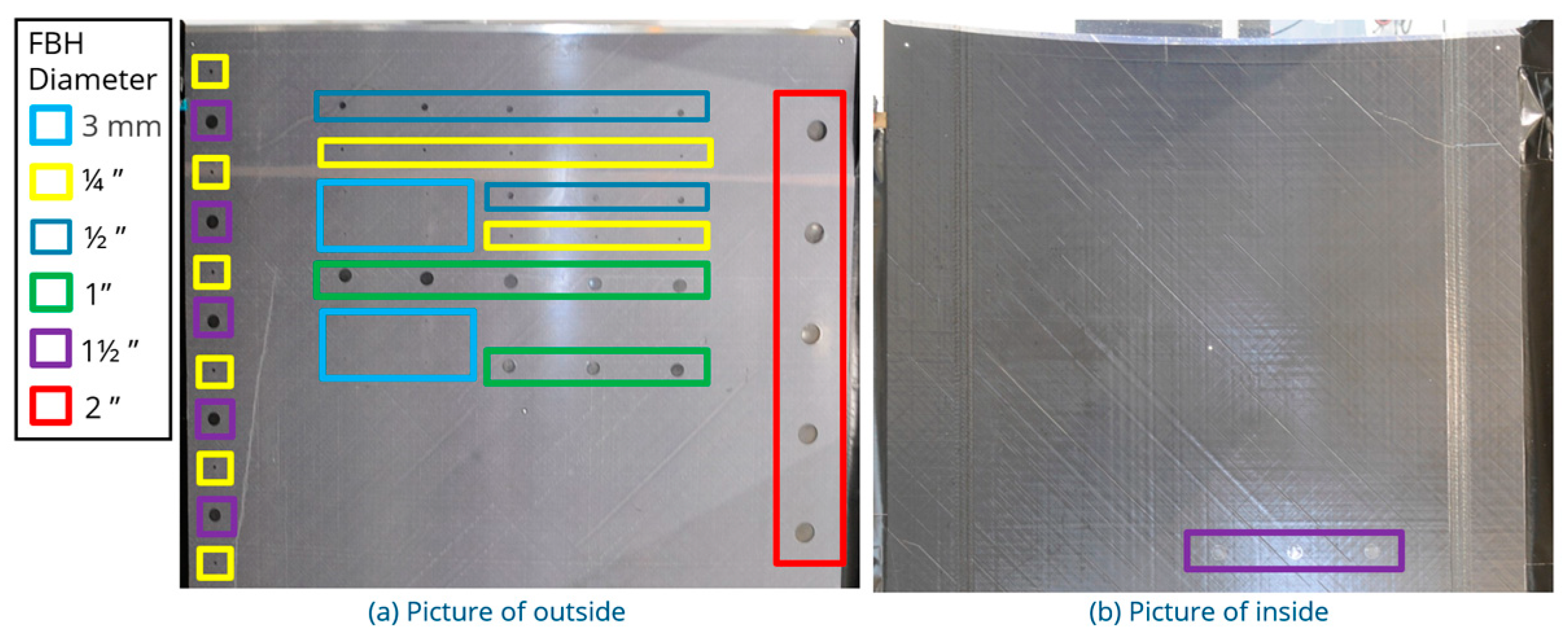
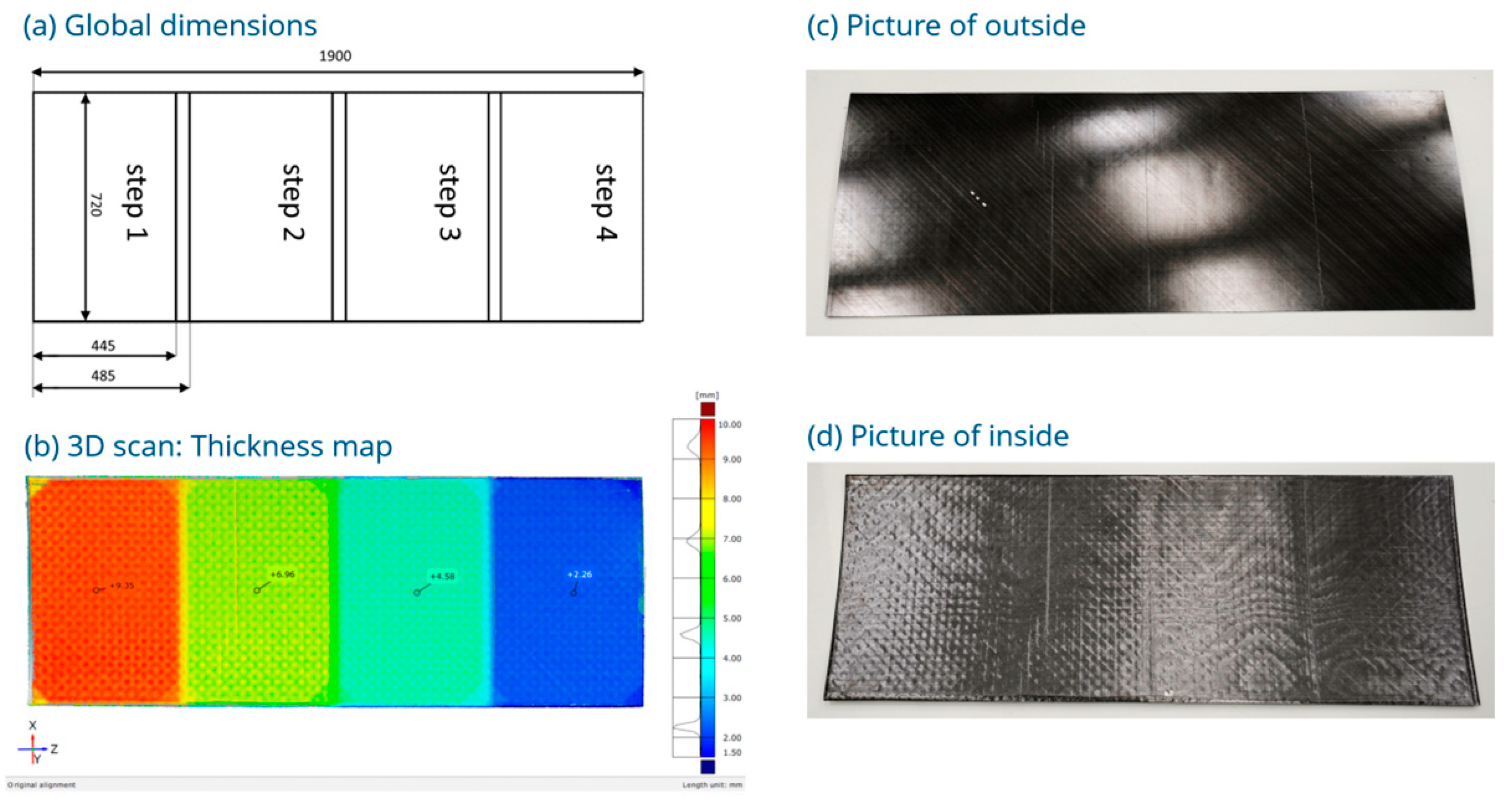
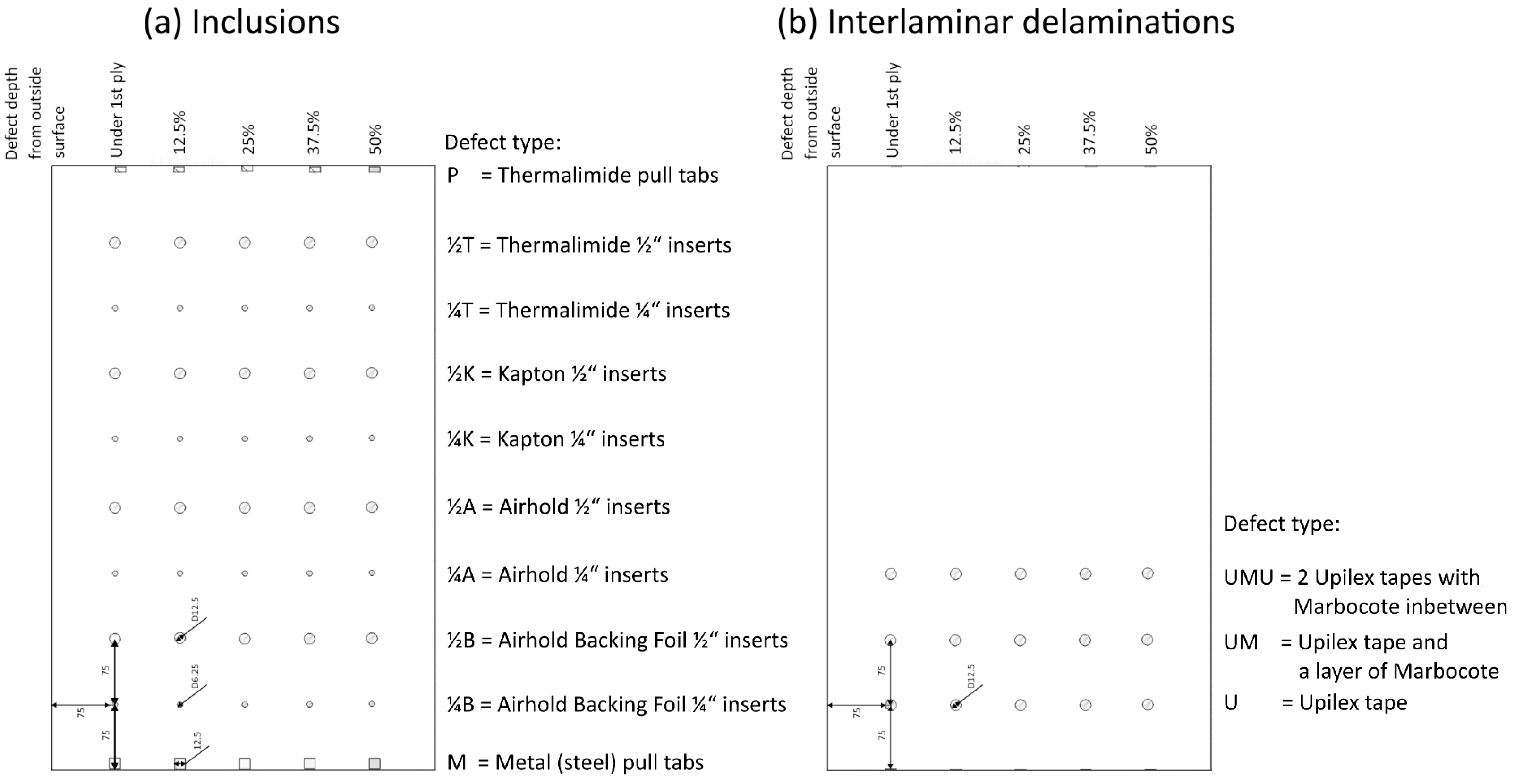
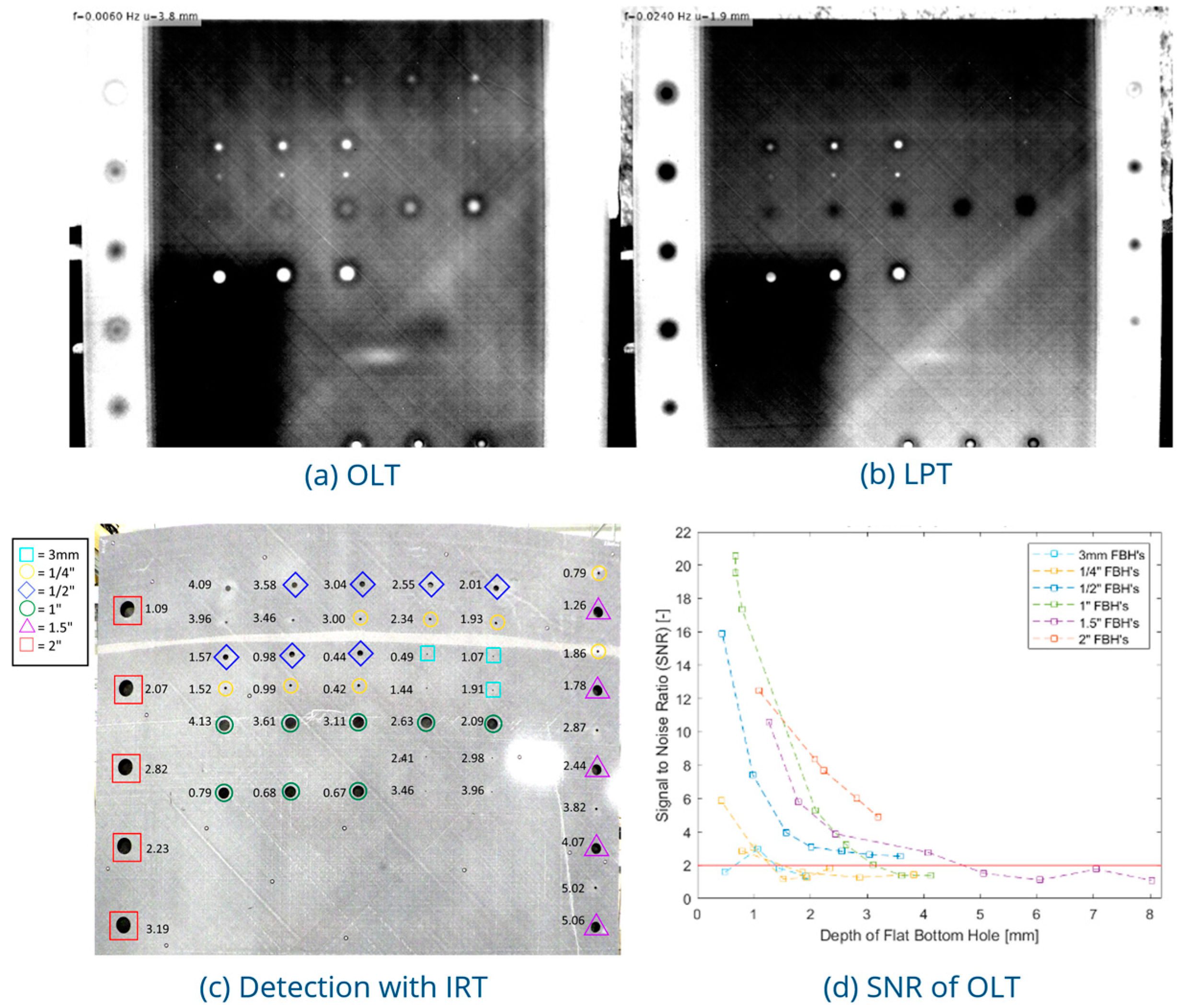
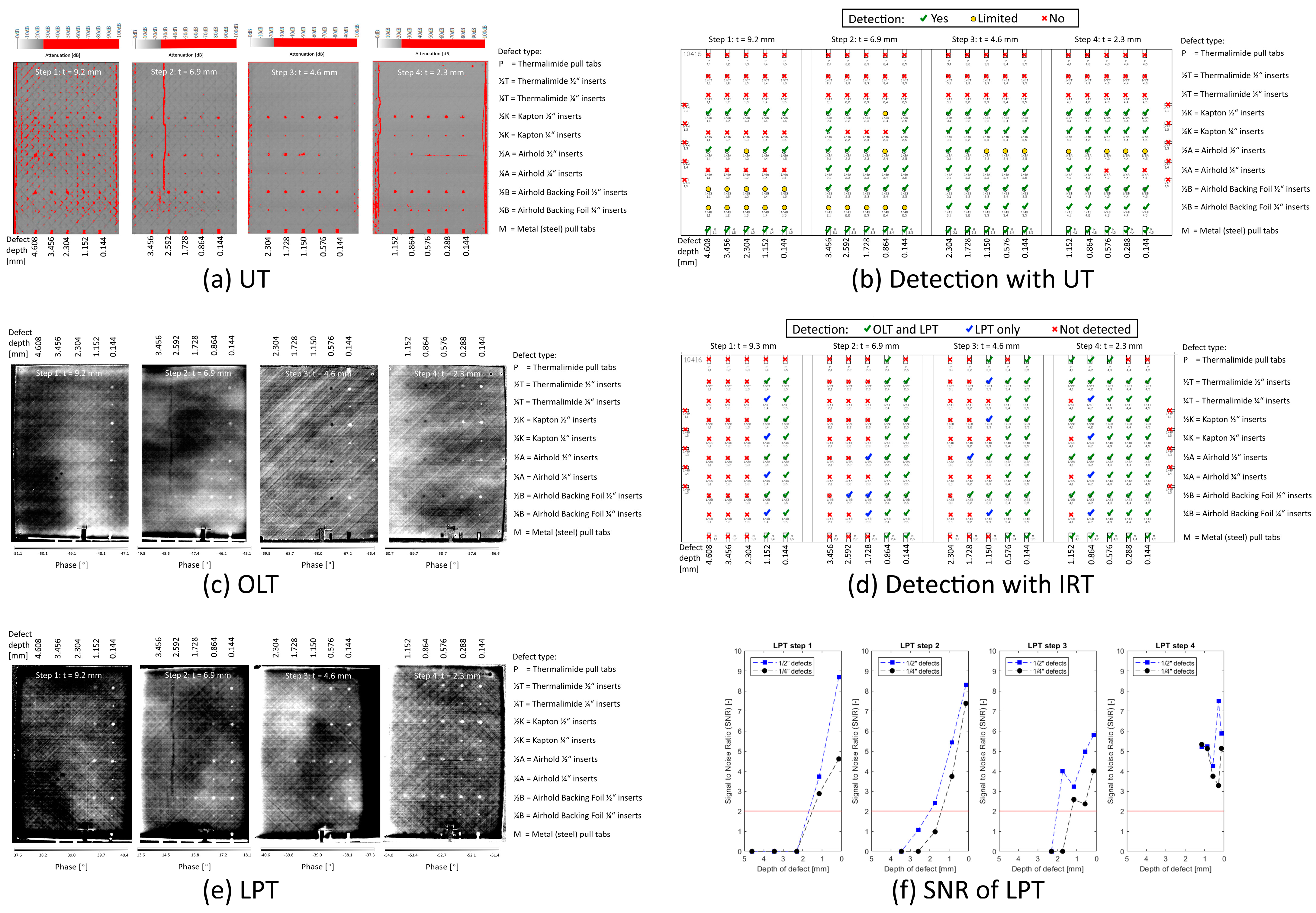
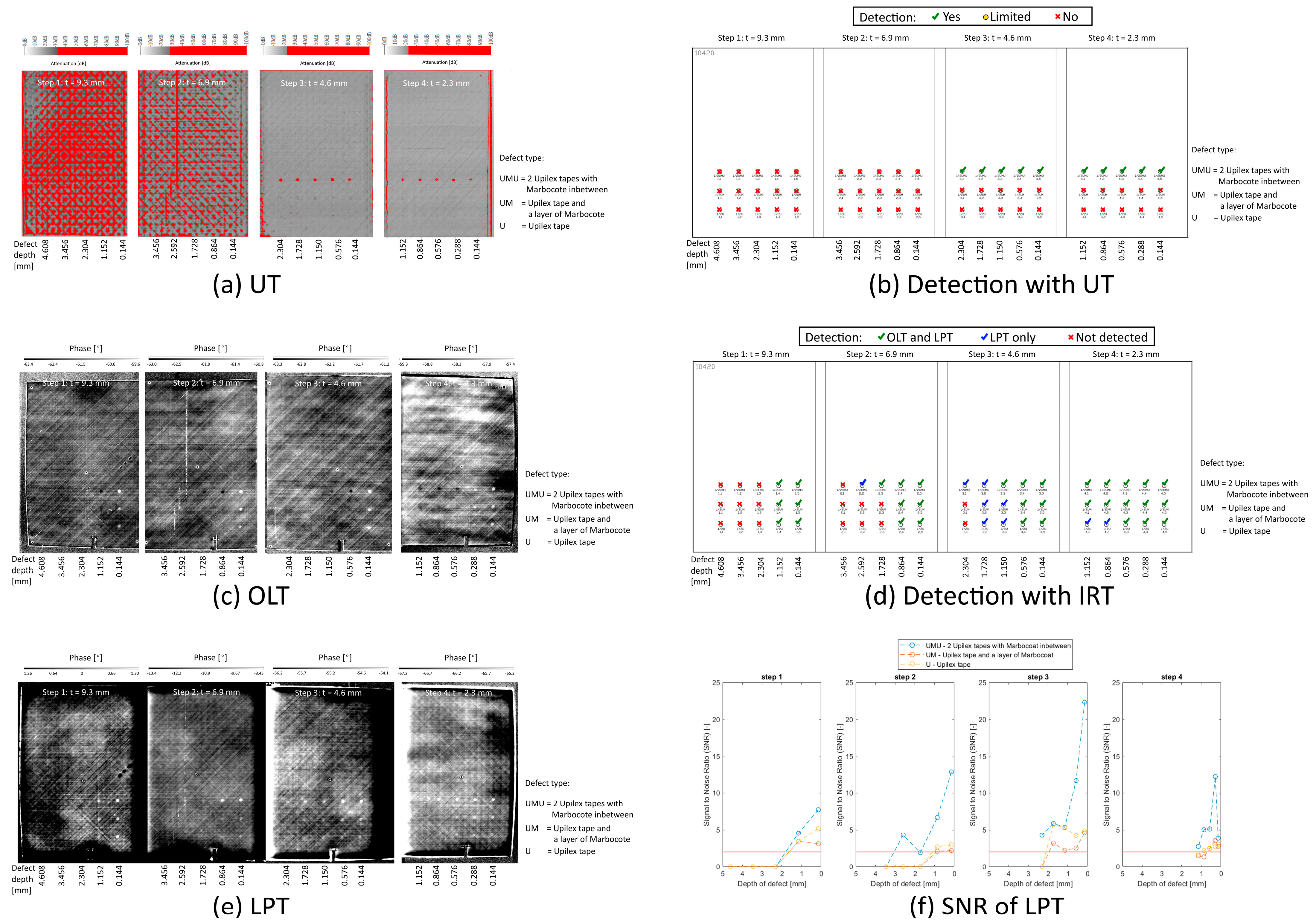


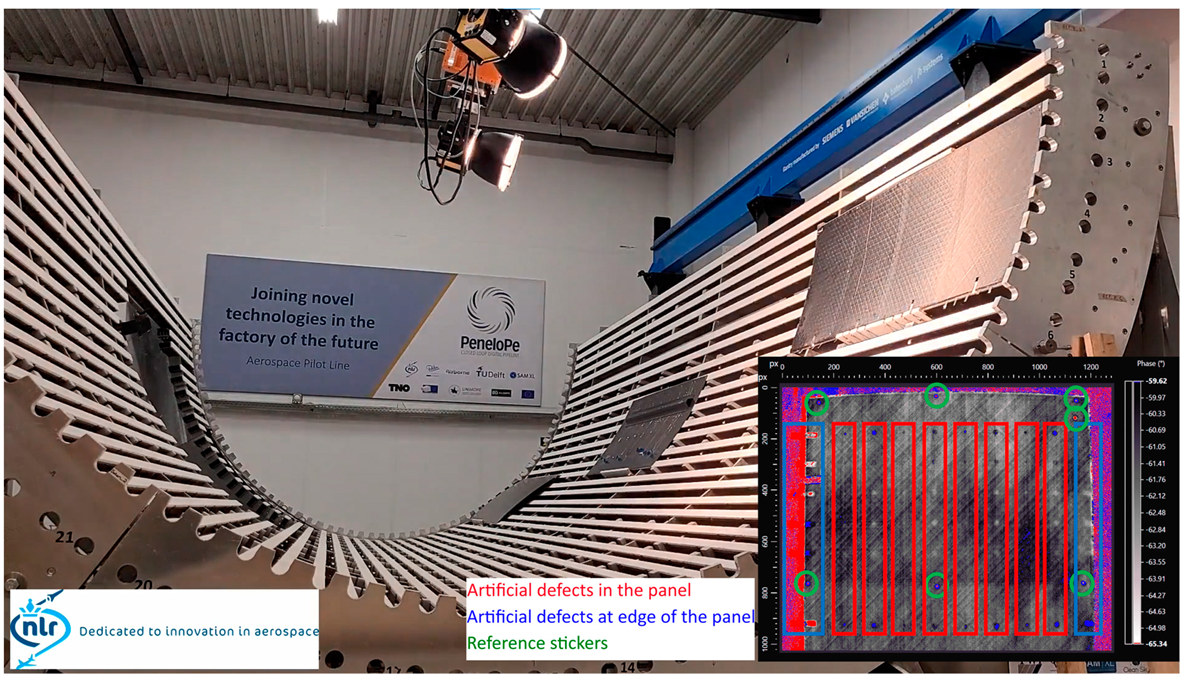
Disclaimer/Publisher’s Note: The statements, opinions and data contained in all publications are solely those of the individual author(s) and contributor(s) and not of MDPI and/or the editor(s). MDPI and/or the editor(s) disclaim responsibility for any injury to people or property resulting from any ideas, methods, instructions or products referred to in the content. |
© 2025 by the authors. Licensee MDPI, Basel, Switzerland. This article is an open access article distributed under the terms and conditions of the Creative Commons Attribution (CC BY) license (https://creativecommons.org/licenses/by/4.0/).
Share and Cite
Deutz, D.B.; Bosch, A.F.; Baptista, D.E.; Veen, E.S.; Platenkamp, D.J.; Jansen, H.P. Non-Contact Non-Destructive Testing Methods for Large-Scale Carbon Fiber-Reinforced Polymer Aircraft Parts. Eng. Proc. 2025, 90, 25. https://doi.org/10.3390/engproc2025090025
Deutz DB, Bosch AF, Baptista DE, Veen ES, Platenkamp DJ, Jansen HP. Non-Contact Non-Destructive Testing Methods for Large-Scale Carbon Fiber-Reinforced Polymer Aircraft Parts. Engineering Proceedings. 2025; 90(1):25. https://doi.org/10.3390/engproc2025090025
Chicago/Turabian StyleDeutz, Daniella B., Arnoud F. Bosch, Dion E. Baptista, Erik S. Veen, D. Jacco Platenkamp, and H. Patrick Jansen. 2025. "Non-Contact Non-Destructive Testing Methods for Large-Scale Carbon Fiber-Reinforced Polymer Aircraft Parts" Engineering Proceedings 90, no. 1: 25. https://doi.org/10.3390/engproc2025090025
APA StyleDeutz, D. B., Bosch, A. F., Baptista, D. E., Veen, E. S., Platenkamp, D. J., & Jansen, H. P. (2025). Non-Contact Non-Destructive Testing Methods for Large-Scale Carbon Fiber-Reinforced Polymer Aircraft Parts. Engineering Proceedings, 90(1), 25. https://doi.org/10.3390/engproc2025090025





